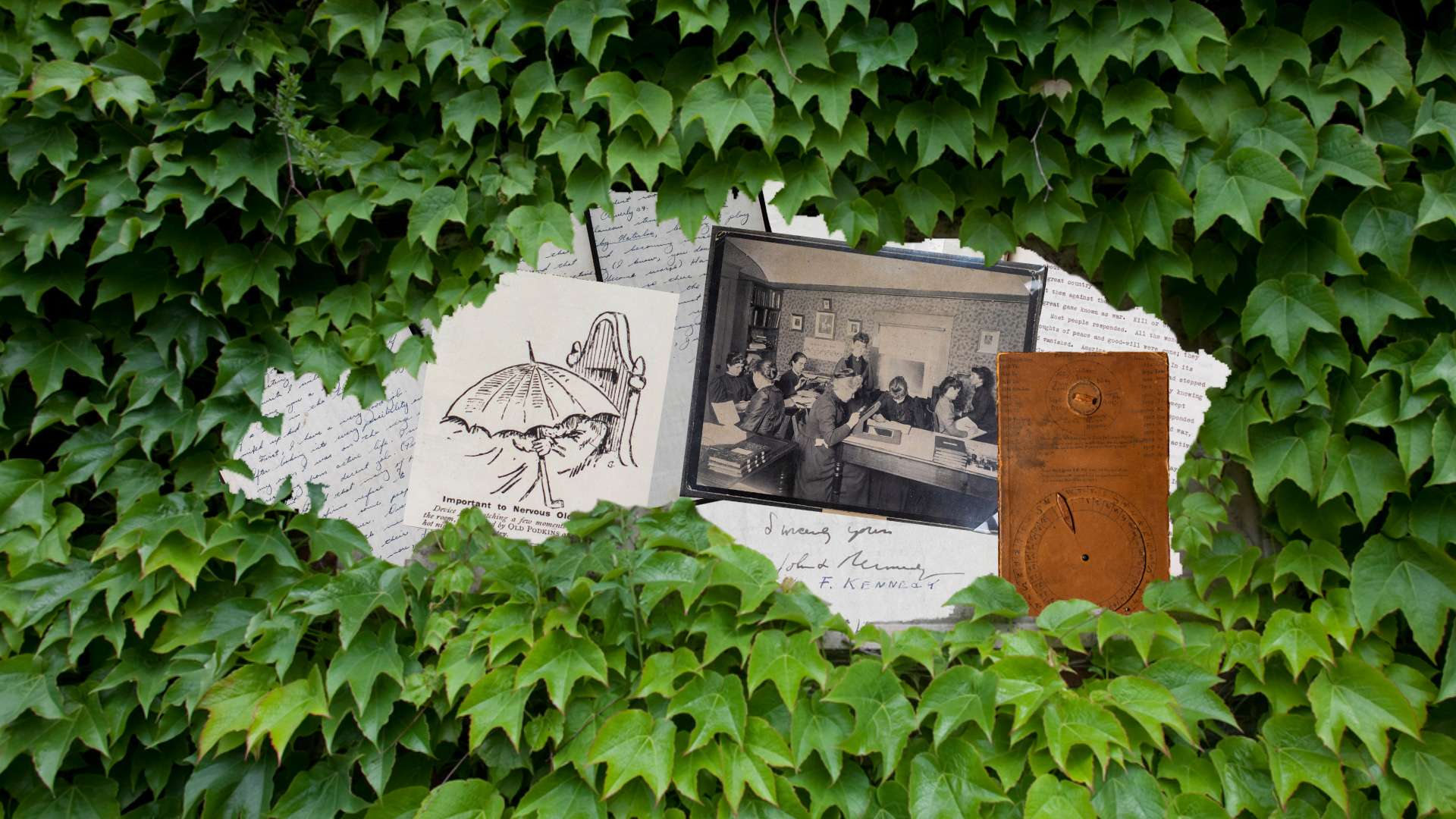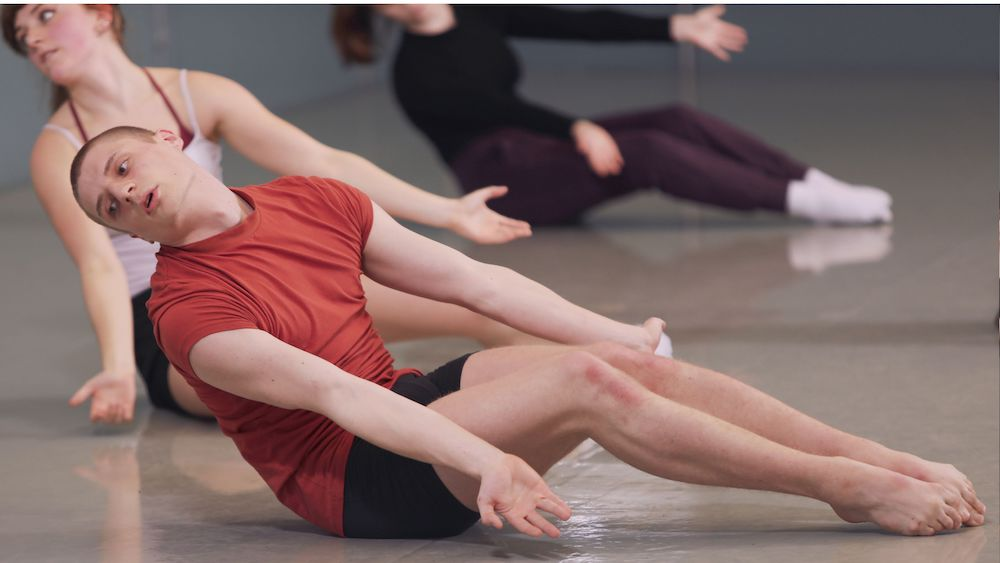Harvard Archives serve as a vital repository of historical documents that reflect not only the legacy of Harvard University but also significant moments in American history. Among the treasures housed within these archives are a handwritten letter from former President John F. Kennedy to his classmates, and a poignant correspondence from W.E.B. Du Bois discussing race relations with his mentor. These artifacts are currently featured in the “Archives Inside Out” exhibit, which celebrates the stories behind each item, illuminating important narratives in both educational and societal contexts. The goal of this exhibit is to make these crucial pieces of Harvard University history accessible and relatable to the public, highlighting the invaluable work of the university’s archivists. Visitors can explore various items that exemplify the depth of Harvard’s institutional memory and its interplay with American culture, shedding light on enduring themes of democracy, progress, and community engagement.
The Harvard University Archives represent a critical collection point for historical materials that document the institution’s past and its connections to broader societal issues in the United States. This significant compilation boasts an array of artifacts, including engaging letters and documents, which serve as a bridge to significant events and figures in Harvard’s heritage. In venues like the “Archives Inside Out” exhibit, viewers can engage with historical narratives that not only resonate within the academic sphere but also reflect the social consciousness of their times. Showcasing correspondence from notable personalities and examining themes such as race and community, these archives function as a collective memory that enriches both the university’s and the nation’s story. Through this initiative, the archives aim to demystify the archival process while fostering a deeper appreciation for the histories embedded in these primary sources.
The Historical Significance of Harvard University Archives
The Harvard University Archives serve as a vital repository for the rich history of Harvard, tracing the evolution of both the institution and the cultural landscape of America. This extensive collection chronicles events, significant figures, and transformative ideas that have emerged from Harvard, encapsulating the dynamic interplay between education and societal progress. Haying a defined narrative, the Archives highlight key documents, such as the various correspondences and letters from notable alumni, including John F. Kennedy and W.E.B. Du Bois, allowing insights into their lives and the historical contexts they navigated.
Moreover, the Archives go beyond mere documentation; they embody the stories of communities and the contributions of diverse individuals throughout history. By exhibiting items related to Harvard’s institutional memory, curators aim to foster a deeper connection between the public and the past. The engaging displays invite exploration and understanding of how Harvard has influenced and been influenced by broader socio-political movements in America. Each artifact, from President Kennedy’s heartfelt letter to his classmates to poignant notes from civil rights leaders, offers a glimpse into the multifaceted identity of one of the world’s leading academic institutions.
Highlighting Key Artifacts in the Archives
Among the remarkable items found within the Harvard University Archives is a letter penned by John F. Kennedy to his fellow classmates, showcasing both his witty personality and his deep-seated admiration for his Harvard experience. This correspondence not only illustrates the personal connections among students of the Class of 1940, but it also reflects the larger concerns and aspirations of a young leader poised to enter the world stage. Such historical letters enable modern readers to grasp the intimate ties that bind iconic figures to their alma mater, emphasizing that Harvard’s influence extends beyond academia to the realms of politics and social change.
In addition to Kennedy, the collection of letters from W.E.B. Du Bois to his mentor Albert Bushnell Hart offers profound insights into the struggles of race relations in America at the beginning of the 20th century. This crucial correspondence sheds light on Du Bois’s perspectives and his pivotal role in shaping discussions around equality and social justice. Items like this not only enrich Harvard’s archival narrative but also engage with ongoing dialogues about race, history, and activism, showcasing the importance of preserving these conversations in the archives.
Promoting Accessibility to Archival Treasures
One of the primary goals of the ‘Archives Inside Out’ exhibit is to demystify the role of archivists and make the rich history held within the archives more accessible to the general public. University Archivist Virginia Hunt emphasizes the importance of showcasing the diverse items that make up Harvard’s legacy, allowing visitors to engage with the materials that tell the university’s unique story. By pulling back the curtain on archival practices, the exhibition invites a broader audience to appreciate the critical work of preserving history and the valuable insights provided by the various items displayed.
The exhibit encourages an interactive exploration of the archival process, showing attendees not just the historical artifacts, but also the methodology behind assembling and maintaining these collections. Through guided processes, visitors learn how archivists curate the materials, select significant items for presentation, and create narratives around these pieces of history. By making the archival process visible, the Harvard University Archives hope to foster a greater appreciation for preservation efforts and inspire curiosity about the vast array of documents that contribute to our understanding of the past.
Reflections on Harvard’s Contribution to Cultural Heritage
The Harvard University Archives stand as a testament to the commitment of the institution to preserving its cultural heritage. The artifacts collected not only document the university’s history but also reflect the broader themes of American history, such as democracy, equality, and civil rights. Items like the sketches from the Harvard Lampoon, a literary publication that has long served as a comedic counterbalance within the university, contribute to a nuanced understanding of the student experience and the cultural fabric that is intertwined with academic life.
In celebrating the diversity of its collections, Harvard also acknowledges the importance of including underrepresented voices and narratives within its archives. For instance, the archives contain personal letters from students of various backgrounds, illuminating their experiences and perspectives during pivotal moments in history. By compiling these narratives, Harvard not only preserves its legacy but ensures that future generations have access to a multifaceted view of cultural heritage that honors all voices and stories.
The Impact of Digital Archives on Accessibility
The digitization of archival materials marks a significant advancement in making Harvard’s history accessible to a global audience. This transition allows scholars, students, and the general public to explore collections that might have been tucked away in physical repositories. Items such as letters from W.E.B. Du Bois and John F. Kennedy’s correspondence can now be viewed online, expanding their reach and impact. As a result, digital archives play a crucial role in fostering research and enhancing public engagement with the storied past of Harvard University.
Additionally, digital archiving practices promote preservation efforts, ensuring that delicate historical documents are safeguarded while still being accessible. The emphasis on web archiving, as demonstrated by the archiving of The Harvard Crimson’s response to the COVID-19 pandemic, illustrates the contemporary relevance of these historical legacies. By capturing and maintaining a record of current events within the same framework as historical documents, the Harvard University Archives remain at the forefront of archival innovation, bridging historical perspectives with present-day narratives.
Curating Exhibitions for Public Engagement
Curating exhibitions like ‘Archives Inside Out’ serves as an effective avenue for public engagement with historical materials. By selecting artifacts that reflect significant historical moments and personal stories, curators invite visitors to interact with history in an immersive manner. This approach not only highlights the importance of the items on display but also encourages visitors to make connections with their own experiences and the wider world, further strengthening the relationship between the university and the community.
Each curator contributes their unique insights and expertise, creating a rich tapestry of narratives that underline the intersection of Harvard’s history with broader societal movements. The selection process is a collaborative effort, involving archivists from different backgrounds who contribute their favorite finds. This collective knowledge ensures that the exhibitions not only present artifacts but also tell compelling stories that resonate on multiple levels and engage diverse audiences.
Celebrating Harvard’s Institutional History
Harvard’s institutional history is vibrant and multifaceted, encompassing various dimensions such as academic achievement, student activism, and the evolution of social justice efforts. The archived materials exemplify this diversity, shedding light on key events and figures that have played significant roles in the university’s narrative. For instance, the various letters and artifacts included in the ‘Archives Inside Out’ exhibit serve as concrete connections to the broader themes of innovation and progress within the Harvard community.
The stories embedded in these documents serve not only as historical facts but as inspiration for current and future generations. By reflecting on the contributions of past scholars and activists, Harvard is better able to understand its role in shaping public discourse and encouraging meaningful change. Each artifact, from correspondence to visual representations of university life, reinforces the notion that Harvard’s legacy is a collective achievement molded by countless individuals who have shaped its identity throughout the years.
Understanding the Role of Letters in Shaping History
Letters hold a unique power in historical documentation, revealing personal insights and emotions from individuals during pivotal moments. The letters found within the Harvard University Archives, such as W.E.B. Du Bois’s correspondence, provide intimate glimpses into the thoughts and motivations of key historical figures. These written exchanges not only tell personal stories but also contribute to larger narratives regarding race, identity, and civil rights. The inclusion of such correspondence is crucial for understanding the broader impact these individuals had both within Harvard and in society at large.
Furthermore, letters like those from John F. Kennedy to his classmates showcase the informal side of historical figures, allowing modern readers to connect with them on a personal level. They provide context and highlight the human aspects behind the tangled web of historical events, ultimately shaping our understanding of their significance. Such correspondence reinforces the importance of preserving these items as part of Harvard’s archival mission, ensuring future scholars and citizens have access to the voices that have shaped history.
Reflections on Archival Work and Community Engagement
The primary goal of archivists at Harvard extends beyond preserving documents; they aim to foster community engagement through their collections. By curating exhibits and showcasing selected artifacts, they bridge the gap between history and contemporary audiences, inviting them to partake in the story of Harvard and its impact on society. The collaborative nature of the ‘Archives Inside Out’ exhibit reflects this commitment to inclusivity, as archivists work together to share their favorite finds and highlight the narratives that resonate with the community.
This commitment to community extends further through education and outreach initiatives aimed at demonstrating the value of archival work. Through workshops, public lectures, and exhibitions, archivists facilitate discussions about the importance of preserving history while encouraging participation in the ongoing narrative. This engagement not only serves to elevate public understanding of archival practices but also reveals the profound connection between past and present, as the stories preserved within the Harvard University Archives continue to inform and inspire future generations.
Frequently Asked Questions
What is the “Archives Inside Out” exhibit at Harvard University Archives?
The “Archives Inside Out” exhibit at Harvard University Archives showcases a selection of historically significant items, including letters from John F. Kennedy and W.E.B. Du Bois. It aims to demystify archival work and highlight the role of the archives in preserving Harvard University history and American culture.
How can I access items from the Harvard University Archives?
You can access items from the Harvard University Archives by visiting the exhibit in Pusey Library’s Lammot du Pont Copeland Gallery, open through April 30, or by exploring their online collections through Harvard’s digital library portal.
Where can I find the letter from W.E.B. Du Bois at Harvard Archives?
The letter from W.E.B. Du Bois to Albert Bushnell Hart is part of the Harvard University Archives’ collection, specifically from Albert Hart’s personal archive, which has recently been digitized for public access.
How does the Harvard University Archives preserve important documents like the John F. Kennedy letter?
The Harvard University Archives preserves important documents like the John F. Kennedy letter through careful cataloging, digitization, and archiving processes, ensuring they are accessible for future generations while also showcasing their significance in Harvard University history.
What role do archivists play in the preservation of Harvard University history?
Archivists at Harvard University Archives play a crucial role in preserving university history by collecting, cataloging, and maintaining various documents and artifacts, such as letters and manuscripts, that reflect the institution’s legacy and the broader context of American history.
Can I learn about the stories behind the items in the Harvard Archives?
Yes, the stories behind items in the Harvard Archives are often shared through exhibits like “Archives Inside Out,” which highlight selected artifacts and their historical context, making Harvard’s rich history more accessible and engaging for the public.
What types of documents are typically found in the Harvard University Archives?
The Harvard University Archives contain a wide range of documents, including letters, photographs, manuscripts, and institutional records, illustrating significant figures and events in Harvard University history, as well as facets of American culture.
Is the content from the Harvard University Archives available online?
Yes, the Harvard University Archives offers a selection of its content online, allowing people to explore significant documents and collections digitally, including items featured in exhibits like “Archives Inside Out.”
What is the significance of the Harvard exhibit in relation to American history?
The Harvard exhibit, particularly “Archives Inside Out,” highlights the interconnectedness of Harvard University history and American history, showcasing how individual stories and documents contribute to a broader understanding of society and culture.
How can the public engage with Harvard University Archives?
The public can engage with Harvard University Archives by visiting exhibitions like “Archives Inside Out,” attending lectures, participating in workshops, or accessing their online collections to explore unique historical documents and artifacts.
| Item | Description | Curator |
|---|---|---|
| Letter from John F. Kennedy to Harvard Class of 1940 | A draft letter from JFK offering a light-hearted view on his life, found while researching class correspondence. | Pam Hopkins, Head of University Archives Reference Services |
| Photograph of Women Computers, Harvard Observatory (circa 1900) | An image highlighting women’s contributions in astronomy, noting the invisible labor in workplaces today. | Alison Macdonald, Records Manager/Archivist for Operations |
| Letter from W.E.B. Du Bois to Albert Bushnell Hart (1905) | Correspondence showcasing the diverse dialogue on race relations in early 20th century America. | Erin Clauss, Lead Processing Archivist |
| Perpetual calendar by Thomas Hill (1885) | An instrument illustrating significant academic contributions outside traditional education. | Dominic P. Grandinetti, Processing Archivist |
| The Harvard Crimson, COVID-19 report (March 2020) | A snapshot of Harvard’s response to the pandemic, part of the web archiving efforts. | Sean Crawford, Collection Development and Records Management Coordinator |
| Sketches from the Harvard Lampoon (1882) | The first donation accepted into the archives, reflecting student life and humor at Harvard. | Alexandra Dunn, Collection Development Archivist |
| Letter from Seamus Heaney to Helen Vendler (2006) | A personal letter touching on Heaney’s experiences, reflecting casual communication between friends during his visit. | Heidi Horner, Collection Development & Records Management Services Assistant |
| Letter from Ragan Henry to Joseph Levow Steinberg (1953) | A personal letter highlighting racial issues and friendship dynamics in the 1950s. | Jehan Sinclair, Processing and Digitization Archivist |
| Bound typescript stories of Harvard Pacifists in WWII (1942) | Documenting opposition to military service during WWII, representing peace activism during a tumultuous time. | Ed Copenhagen, Reference Archivist |
Summary
Harvard Archives stands as a pivotal showcase for the intertwined stories of Harvard University and American history. The recent exhibit, “Archives Inside Out,” has effectively unraveled the intricate threads of archival work, highlighting delightful finds from notable archivists that emphasize the rich narrative tapestry of the past. From personal letters of historical figures to photographs revealing the unsung contributions of women in the sciences, these artifacts not only tell compelling stories but also aim to demystify the significant role of archives in preserving our collective memory. As the exhibit continues through the end of this month, it invites the public to engage with these narratives, fostering a deeper understanding of both Harvard’s heritage and its impact on wider society.



